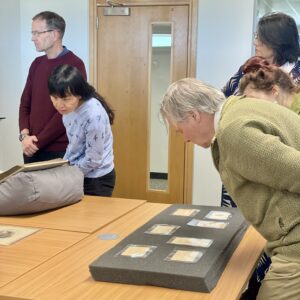
People involving in our archive event.
In light of the inaccuracies that appeared in our exhibition text, as highlighted in the previous blog (1.5.5), we considered mentioning this in the introduction at the forthcoming event. While I’m supportive of open discussions, I’m ambivalent about such transparency in a public setting. My hesitation stems from a concern that this openness could potentially diminish the trust our audience and collaborators have in our exhibition.
My previous studies in mass media have instilled a keen sense of ‘gatekeeping’ — a reminder of the unpredictable nature of public reactions. There’s a part of me that holds on to the ideal of delivering a ‘perfect’ outcome to our audience. Although perfection may be an unattainable goal, it’s still a worthwhile pursuit. However, team members see value in being honest about our process, including the importance of fact-checking and the necessity of revising and correcting our work. I understand the value of such perspectives, and going forward, I will balance these perspectives to better manage outcomes in a variety of situations.
Reflecting on our promotional strategies, our campaign outreach was organic, yet with hindsight, a more targeted approach might have been more effective. Considering who our audiences are and the platforms where we can reach them could greatly increase participation and foster diverse interactions. For instance, in addition to social media, promoting our event through TV screenings at the Edinburgh College of Art could engage the student community, while street posters could attract a more varied demographic, thereby narrowing the information divide. For future events, I aim to move away from relying solely on the established audience of the exhibition space/institution and develop strategies to connect with audiences beyond our existing scope, expanding our reach and impact.

Leave a Reply